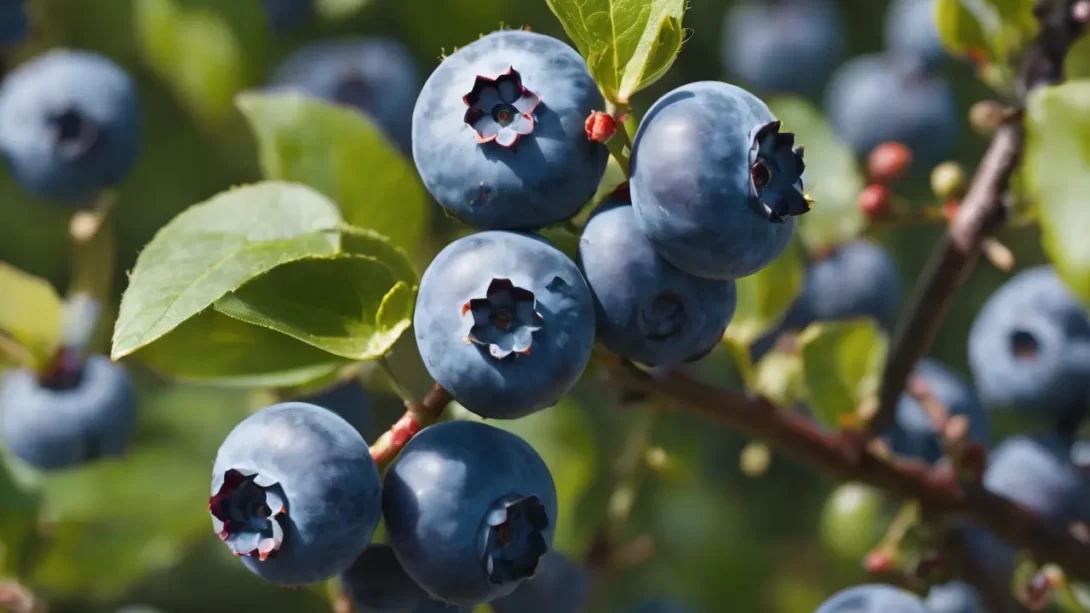Blueberries are a beloved fruit, cherished for their delicious taste and nutritional benefits. However, like all fresh produce, blueberries have a limited shelf life. Knowing how to identify when blueberries have gone bad is crucial to avoid food waste and potential health issues. This article will guide you through the key signs and methods to determine if blueberries are past their prime, ensuring you enjoy them at their best.
Blueberry Freshness
Fresh blueberries have specific characteristics that indicate their quality. They should be plump, firm, and have a vibrant blue color with a slight silvery bloom. This natural sheen is a sign of freshness. As blueberries age, they lose their firmness and the sheen diminishes. Typically, when stored correctly, blueberries can last 5 to 10 days in the refrigerator. Factors like humidity, temperature, and initial freshness at the time of purchase can affect this lifespan.
Visual Inspection of Blueberries
The first step in assessing blueberries is a visual inspection. Look for signs of mold, which typically appears as fuzzy spots that can be green, white, or blue. Also, check for any shriveling or discoloration. Fresh blueberries should be uniformly blue; if they start turning red, brown, or have dark spots, they might be going bad. While some color variation is normal, significant changes often indicate spoilage. Additionally, if you notice any blueberries in the batch leaking juice or looking squashed, it’s a sign that they may be overripe or spoiled.
Tactile Assessment
After visual examination, gently feel the blueberries. They should have a certain firmness – not too hard but definitely not mushy. If you find that the berries are soft, mushy, or have a wrinkled texture, these are clear indicators that the blueberries are no longer fresh. Overripe berries often feel damp or sticky, another sign that they should not be eaten. It’s important to handle them gently during this process to avoid causing damage to good berries.
Smell Test
The aroma of blueberries can be a reliable indicator of their condition. Fresh blueberries typically have a subtle, sweet, and slightly grassy scent. As they begin to spoil, their smell changes significantly. If you detect any sour, fermented, or otherwise unpleasant odors, this is a strong sign that the blueberries are bad. Spoiled fruits often produce a distinctly sour or off smell, which is a result of bacterial growth and fermentation processes. Trusting your sense of smell is important, as it can often detect spoilage that is not yet visually apparent.
Taste Test (Caution Advised)
If the blueberries have passed the visual, tactile, and smell tests, you might consider a cautious taste test. However, it is important to be aware of the risks associated with tasting spoiled fruit. Only taste a very small amount, and if there is any off-flavor or unusual sourness, spit it out immediately. Fresh blueberries should taste sweet with a slight tang, not overly sour or fermented. This step should be the last resort and only conducted if the berries seem fresh based on other assessments.
Storage Practices to Prolong Freshness
Proper storage can significantly extend the shelf life of blueberries. They should be kept in the refrigerator in a breathable container. It’s crucial to avoid washing blueberries before storing them, as the excess moisture can promote mold growth. If you must wash them, do so right before eating. For longer-term storage, blueberries can be frozen. Spread them out on a baking sheet to freeze individually, and then transfer them to a freezer-safe bag or container. This method preserves their quality and prevents them from clumping together.
When to Discard Blueberries
It’s essential to know when to discard blueberries to ensure safety and quality. If you observe any signs of mold, it’s best to throw the entire batch away. Mold can easily spread throughout the container, even if it’s not visible on every berry. Also, discard blueberries that are excessively soft, shriveled, or have an off smell or taste. Consuming spoiled blueberries can lead to foodborne illness, so it’s better to err on the side of caution.
Health Risks of Spoiled Blueberries
Eating spoiled blueberries poses health risks, such as food poisoning from harmful bacteria. Symptoms can include stomach upset, nausea, vomiting, and diarrhea. These bacteria can sometimes be present even if the berries don’t have visible mold. Therefore, it’s crucial to avoid eating blueberries that show any signs of spoilage.
Conclusion
Identifying bad blueberries is a simple yet important skill for anyone who enjoys this nutritious fruit. By paying attention to visual cues, texture, smell, and, cautiously, taste, you can ensure that you’re consuming blueberries at their best. Proper storage is key to prolonging their freshness, and knowing when to discard them is crucial for your health. Enjoy blueberries as part of your diet, but always be mindful of their condition to ensure you reap their full health benefits.




